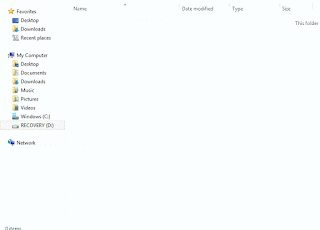Nothing can put a damper on productivity quite like a computer that
crashes on a regular basis. Sometimes, a crash is preceded by the
dreaded “blue screen of death” or another warning; other times, a
computer simply shuts off without any warning at all. In either case,
the end result is a whole lot of frustration, aggravation and lost work.
If your computer has been crashing frequently, you’d probably like to
put an end to it. Unfortunately, getting to the bottom of things if
often easier said than done. The following tips about improving your
computer’s performance, though, are excellent places to begin.
Possibility #1: Corrupted System Registry Files
Every Windows-based PC has something called a Windows registry. The
registry contains several files that are integral to the performance and
operation of your computer. Over time, some of those files can become
corrupted, be misplaced or get lost altogether. When that happens, the
system registry becomes compromised – and frequent crashes are
all-too-common symptoms. The best way to rule this possibility in or out
is by running a Windows registry cleaning program. Such programs scan
your Windows registry for problems then automatically make repairs. If
you run a registry cleaner and the crashes persist, they are probably
being caused by a different issue.
Possibility #2: Disorganized Files
Windows operating systems handle file organization in a way that
isn’t very intuitive. Basically, they break files up and fit them into
gaps in the computer’s memory. As time goes by, these disorganized files
can prompt frequent crashes. Luckily, a great optimization solution is
built right into Windows-based PCs: the disk defragmentation utility.
Although its location on a computer varies, you can generally locate it
within the System and Security section inside the Control Panel. By
running a defrag once every few months, you may be able to keep those
pesky computer crashes at bay.
Possibility #3: Malicious Software
Malicious software can take many different forms. Sometimes, it’s a
virus that is accidentally unleashed after opening a strange email;
other times, its adware that tags along with other information that is
automatically downloaded from a website. Whatever type it is, there’s no
question that malicious software can wreak havoc on a computer’s
performance. Happily, there are many topnotch programs out there that
regularly scan your computer for the presence of such problems – and
that help guard against them, too. Buy one, install it and use it
regularly; your crash issues may come to an end.
Possibility #4: Too Little Available Memory
When you buy a new computer, it feels like there’s no end to the
amount of memory that it has. Of course, this isn’t true at all. As
never-ending as the available memory on your PC may initially seem, the
fact is that it can be depleted with incredible speed. You can find out
for sure by checking the information within “My Computer.” If it appears
that your available memory is low, you can use a PC cleanup program to
remove unnecessary files; such programs remove things like temporary
Internet files and other file debris that can suck away much-needed
memory.
Possibility #5: Overheating
If you’ve run through all of the preceding possibilities and continue
experiencing frequent crashes, a hardware issue could be to blame. An
easy one to rule out is overheating. A computer’s CPU, or central
processing unit, includes a fan that is designed to keep it running
cool. Sometimes, the fan wears down and doesn’t work as efficiently;
other times, it’s just not able to handle the work that your computer
has to do. In either case, buying a bigger, better fan isn’t very
expensive. If it puts an end to your PC crashing problem, it will have
been more than worth it.
Don’t Put Up with Frequent Crashes!
As discussed, frequent computer crashes can be triggered by a wide
variety of issues. Luckily, many of these issues are relatively easy to
remedy. Work your way through the preceding list; chances are, you’ll be
able to pinpoint the problem and put an effective cure to work. Nine
times out of ten, a computer simply needs a little bit of routine
maintenance to get it back on track again. In the future, keep these
points in mind. Any time you buy a new computer, keep up with its basic
maintenance right from the get-go. By doing that, you could avoid “blue
screen of death” and crashing problems altogether – and that’s something
that you’re bound to appreciate!

































